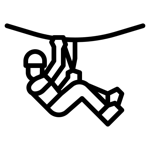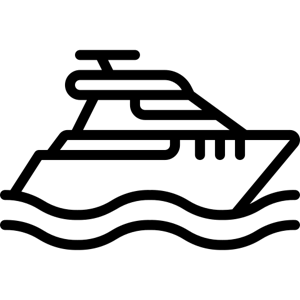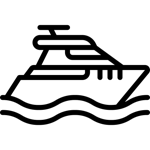- 7 minute read
- Digital Marketing
- Email Marketing
- Pay-Per-Click
Digital Marketing Pro Tip: Why You Should Always A/B Test
Intermediate
Join hundreds of other operators and REGISTER NOW for Spark 2024 New Orleans October 13-15th!

Determining your marketing objectives is a delicate balance. The dollar signs add up and it can be challenging to decide where to spend your resources to have the most impact.
When putting together your marketing budget it is critical to understand the reason and purpose of each line item. Stop to ask yourself, what goal is this resource or tactic contributing to? Adopting a value-driven approach to budgeting is the first step in deciding where to allocate your funds.
Because FareHarbor supports operators of all sizes and activity types, we cannot recommend one specific marketing budget; however, this article is meant to guide you through scenarios where your marketing dollars can stretch farther and help you achieve your objectives.
Your marketing objectives will determine how you should allocate your resources, so let’s look at some examples of businesses with different objectives and how they can prioritize their budget.
 Tour Operator 1: Drive awareness and promote new tour offerings
Tour Operator 1: Drive awareness and promote new tour offeringsTour Operator 1 could be a business with low market share, or perhaps they have a set of new tours they would like to promote. By increasing brand awareness, Tour Operator 1 could reduce overall customer acquisition costs and establish long-term, repeat customers. This operator may find that they have to allocate a larger part of their budget to driving brand awareness, especially if they plan to do so on various platforms.
 Tour Operator 2: Increase website traffic and maximize conversions to drive revenue
Tour Operator 2: Increase website traffic and maximize conversions to drive revenue Tour Operator 2 may be a business that experiences either low organic traffic to their site, low drop-off rates, or general poor site performance. The goal for Tour Operator 2 is to ensure that their website is best optimized to facilitate the purchase and drive qualified traffic to their site. As you can see by the collection of guides we have dedicated to websites, we are firm believers that your website should be your best salesman.
 Tour Operator 3: Engage with new and existing customers, increase following base on owned media channels
Tour Operator 3: Engage with new and existing customers, increase following base on owned media channels It’s possible that Tour Operator 3 is a business that sees a steady volume in website traffic or is maybe heading into the off season. Their goal is to keep engagement high with new and existing customers, which could increase their following on various social media platforms.
Now that we have a general understanding of what goals each operator is trying to achieve, we can begin identifying the proper tactics that help them achieve those goals, a.k.a. our value-driven approach.
 Tour Operator 1: Social media ads & content, search engine marketing, website optimization
Tour Operator 1: Social media ads & content, search engine marketing, website optimizationAt a high level, this business wants to increase their reach and get their brand in front of as many people as possible. Therefore, when trying to generate awareness, the more touch points the better. To do so, we recommend focusing your attention (and budget) on tactics that are “top-of-the-funnel” drivers.
Because of their daily usage, ads through platforms like Facebook and Instagram can help build awareness, brand consideration, and conversions across several locations, demographics, and devices. The bonus here is that you will have larger real estate to utilize more design and copywriting flexibility.
 Pro tip: You can decrease your costs by including customer insights that can refine your list of targeted users. Access your Google Analytics to see the locations that visit your website the most, general demographics, as well as any additional insights.
Pro tip: You can decrease your costs by including customer insights that can refine your list of targeted users. Access your Google Analytics to see the locations that visit your website the most, general demographics, as well as any additional insights.
For search engine marketing, website optimization, and social media, the goal is to create synergy among your ads. Ensure that there is consistency in the copy and visuals you include in your ads and make small revisions to the remaining platforms. These tweaks, while they may seem small, reinforce your brand and mitigate any dissonance that could occur from buyers who like to do their research.
 Tour Operator 2: Paid search, SEO, and retargeting ads
Tour Operator 2: Paid search, SEO, and retargeting adsIn this circumstance, the focus is on quality over quantity. In terms of the marketing funnel, users who are actively searching indicate a stronger purchase intent, so our tactics are aimed to “intercept” them as they begin to consider or weigh options.
While focusing on SEO is an important start, it can still take time for your business to see the impact of increased traffic. That said, we encourage you to consider paid search as a supplementary way to drive traffic to your site. Paid search allows you to hone in on specific keywords relevant to your business and provide you with several different targeting options to maximize your conversions.
 Pro Tip: If you are new to Google Ads or paid search, you may be wondering which “match type” to use for keywords. Modified Broad Match is a great option to achieve a balance of reach and targeting.
Pro Tip: If you are new to Google Ads or paid search, you may be wondering which “match type” to use for keywords. Modified Broad Match is a great option to achieve a balance of reach and targeting.
Realistically, not everyone who lands on your page will book. Not to fear, there are still ways to stay in front of these potential customers by the way of retargeting ads. If you are already running paid search, you can leverage the Google Display network to start retargeting or research other retargeting platforms providers, like Adroll. The important thing before getting started is making sure you have a retargeting Pixel set up on your website!
 Tour Operator 3: Email marketing, social media, review management
Tour Operator 3: Email marketing, social media, review management As opposed to the other tour operator scenarios we looked at, companies that fall under this category could be focusing on retention or attracting passive future buyers.
Email marketing still stands to be one of the most cost-efficient marketing strategies available. Whether you are sending an email to a list of subscribers or through your Dashboard, emails are much more targeted and personalized, leading to a higher impact. As you begin gearing up for your next season, keep customers informed of any new offerings or deals on your promotions.
For social media, publishing user-generated content (UGC) is a powerful way to keep existing customers engaged while also building up new followers.
Lastly, it’s no surprise that online reviews can sway a potential customer’s judgment, and that is especially true with tours and activities. Review platforms act as both a selling tool and a retention tool. Set a scheduled reminder every week to review the latest submissions and respond promptly.
Your marketing plan and objectives, like your business, will be unique. While these scenarios and recommendations are a guide to assist your decision making, your final marketing mix year to year or season to season can change and require a combination of multiple tactics listed above. Start by defining your objectives and experimenting with strategies aligned with your goals. For more promotion tips, browse our digital marketing guides.